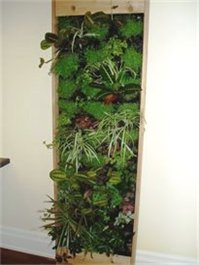Classrooms that Integrate and Connect
It is important to recognize that "place is pedagogy" — our students learn about the world not just from their teachers but also from what, where and how they live and learn. The school facilities and their classrooms teach them as much as we do. Ask "what is this physical space teaching our students about the world?" Does it teach them that they are connected to the past and future, to the rest of Nature, to the rest of the globe? Does it teach them that life is an integration of everything they will ever learn?

The learning environment is a rich combination of events that trigger multiple intelligences attuned to an abundant variety of emotional, intellectual, visual and spatial stimuli.
— Steven Bingler
BASELINE CRITERIA FOR CLASSROOMS THAT INTEGRATE AND CONNECT
- Design the classroom to allow students:
- to interact with each other
- to connect to the rest of the school (other teachers and students) for curriculum integration
- to connect with the outdoor classroom (that your school has created or will be creating)
- to connect with other schools and community members (eg, to collaborate on research)
- to connect with the rest of the world for global learning and intercultural exchanges (through real-time or asynchronous web technologies, webcasts, sharing of websites)
- Classroom as pedagogical tool:
- ecofriendly features in every classroom that are passively "learningful"
- track initial capital costs, operating costs, cost recovery, ecofootprint (full cost analysis) to make this part of your school's "learning it by living it" goal
- Include the qualities of complexity, surprise, novelty and beauty to encourage exploratory behaviour among students and teachers (with thanks to the original researcher whose name is unknown)
- Design learning spaces to help students create connections to the Earth and the natural world:
- design the classroom to help build kinship with the rest of Nature
- include beautiful things and a bit of "wild" in each classroom (plants, etc.)
- design a compass or sundial into the floor in some classrooms
- ensure there are maps in some classrooms
- have some visual representation of the story of life in each classroom (eg, posters or murals, illustrated timelines around the upper walls)
- envision each leaving/graduating class (or entering class) adopting a classroom to "decorate" with the above features, creating their legacy in the school and so that each classroom will be unique
- Ensure space for posters in each classroom (along with continuing professional development in best practices) to support and ensure efficient use of new systems (eg, energy efficiency) by classroom occupants and to foster sustainable behaviours
- Ensure that each classroom reflects the school mission, philosophy and essential agreements
IDEAL CRITERIA
- Create classroom opportunities (space and wiring built in) to allow learning from interactions with the rest of Nature (especially in — but not restricted to — science and geography rooms)

- potential for an aquarium, terrarium, insectarium or aviary in each classroom
- potential for growing / tending herbs in window boxes for school kitchen, class fundraiser, or local food bank
- potential for a mini "living system" or living wall in each classroom
Return to Greening School Facilities
Go to School Greening
Visit the GreenHeart Education Homepage
|


